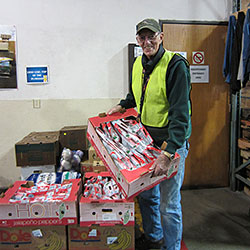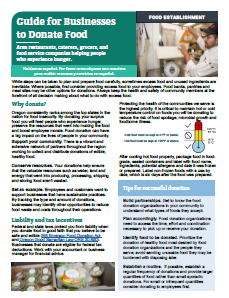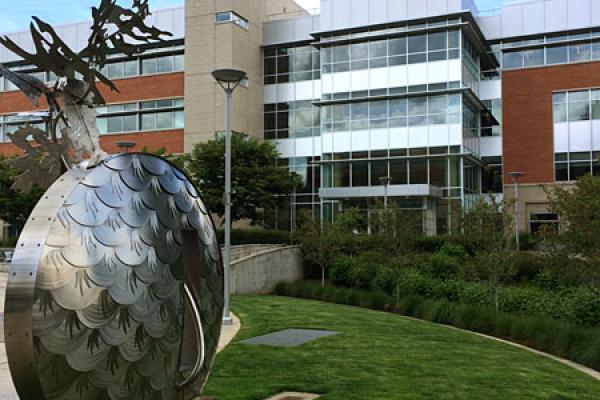
Donating food is a great way to ensure the edible food you cannot use goes to families or individuals in need. Not only is this the best and highest use for unwanted food, donation is also tax deductible and is protected by Good Samaritan laws.
Get Started
While steps can be taken to plan and prepare food carefully, sometimes leftovers and unused ingredients are inevitable. Food banks, pantries and meal sites can take some donations. Join area grocers, restaurants, caterers and food service companies that are helping people who experience hunger.
| 1 | Identify food to be donated - What type of shelf-stable, perishable or prepared foods could be donated? Prioritize the donation of healthy food most desired by food donation organizations and the people they serve. Don’t worry about donating complete meals. Excess ingredients can be made into meals at the food assistance organizations as well. Avoid sending unusable food they may be burdened with disposing of later.
- Access how much food could be donated and how often: every day, once a week or once a month?
- Follow food-safety practices for handling preparation, cooking, cooling, and storing. Concerned about liability? Learn more about the Good Samaritan Laws.
|
| 2 | Find a local food donation partner - For smaller, more sporadic amounts, consider donating to employees first, then look for food assistance programs in your area.
- Let us help you identify potential partnerships within our community. We have a good understanding of who takes what and capacity. Connect with us.
- Search the Oregon Food Bank tool to get an idea of what organizations are in your neighborhood that you might partner with.
|
| 3 | Plan accordingly and establish a routine - A donation partner will need to assess the time, effort and coordination necessary to pick up or receive your donation. Often these are volunteer ran organizations.
- Work with a chosen donation partner to set up a process to identify, gather, safely store, label, and record food for donation and create a pick-up schedule.
|
| 4 | Train staff - Train employees to identify, safely store, and label food properly for donation. We can help. Assistance in English and Spanish.
- Build it into your standard operating procedures. Post donation protocols and tracking logs near storage and prep areas.
|
Additional Tips
Find out more details on liability, tax benefits, and other considerations on our FAQ page. If you are a representative from a food assistance program, there’s more information relevant to your organization here as well.

Download the Business Guide to Donating Food flyer
Why donate food?
- Feed hungry people in your community.
- Divert edible food from the landfill and avoid costly disposal fees.
- Qualify for tax deductions.
- Build stronger relationships with customers, your community and local organizations.
Contact us
Our Sustainability Advisors can work with your business to help you find organizations to donate to in your community, set up a program and train staff. Email us at lis@clackamas.us or call 503-742-4458.

 Translate
Translate







